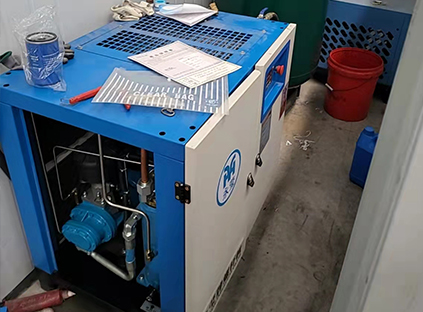Variable frequency screw air compressors are widely used in various industries due to their energy efficiency and flexibility. However, like any other complex machinery, these compressors require regular maintenance to ensure optimal performance and longevity. This article aims to highlight the key considerations before and after maintenance procedures for variable frequency screw air compressors.

1. Pre-Maintenance Considerations:
1.1 Equipment Inspection:
Before starting any maintenance procedure, it is essential to inspect the entire compressor system thoroughly. Check for any visible signs of wear and tear, leaks, or loose connections. This inspection will help identify potential issues and determine the extent of maintenance required.
1.2 Review Manufacturer's Manual:
Always refer to the manufacturer's manual for specific guidelines on maintenance procedures, intervals, and safety precautions. Each compressor model may have unique maintenance requirements, and following the manual ensures that you adhere to the manufacturer's recommendations.
1.3 Gather Necessary Tools and Spare Parts:
Make sure you have all the necessary tools and spare parts required for the maintenance procedure. This includes wrenches, lubricants, filters, gaskets, and any other components that may need replacement during the process. Having these items readily available will save time and prevent delays.
1.4 Safety Measures:
Ensure that all safety measures are in place before starting the maintenance. This includes wearing appropriate personal protective equipment (PPE), such as gloves and safety glasses. Additionally, make sure the compressor is properly isolated from power sources and that the pressure is released before commencing any maintenance work.
2. During Maintenance:
2.1 Cleaning and Lubrication:
Clean the compressor thoroughly, removing any dust, debris, or oil buildup. Pay special attention to the cooling fins, air filters, and oil filters. Replace the filters if they are clogged or damaged. Lubricate all moving parts as per the manufacturer's recommendations to minimize friction and extend the life of the compressor.
2.2 Belt and Pulley Inspection:
Check the condition of belts and pulleys. Look for signs of wear, cracks, or misalignment. Replace any damaged or worn-out belts, and adjust the belt tension if necessary. Ensure that the pulleys are properly aligned to prevent excessive vibrations and belt slippage.
2.3 Electrical System Check:
Inspect the electrical connections, control panels, and wiring for any loose connections or signs of damage. Ensure that all electrical components are functioning correctly, including relays, contactors, and overload protectors. It is advisable to consult a qualified electrician for any electrical repairs or adjustments.
2.4 Variable Frequency Drive (VFD) Calibration:
If your compressor is equipped with a VFD, check its calibration settings. Verify that the VFD is programmed to operate within the recommended frequency range for optimum efficiency. Adjust the settings if necessary, following the manufacturer's instructions or seeking expert guidance.
3. Post-Maintenance Considerations:
3.1 System Testing:
After completing the maintenance procedures, conduct a comprehensive system test to ensure the compressor is functioning correctly. Monitor the compressor's performance, including pressure levels, temperature, and power consumption, to verify that it operates within the desired parameters.
3.2 Document the Maintenance:
Maintain a detailed record of the maintenance performed, including the date, specific tasks completed, components replaced, and any adjustments made. This documentation will serve as a reference for future maintenance and provide valuable insights into the compressor's history.
3.3 Regular Maintenance Schedule:
Establish a regular maintenance schedule based on the manufacturer's recommendations and the compressor's operating conditions. Adhering to a routine maintenance plan will help prevent major breakdowns, reduce downtime, and extend the compressor's lifespan.
Proper maintenance of variable frequency oil injected air compressor is crucial for ensuring their reliable operation and maximizing their lifespan. By following the pre- and post-maintenance considerations outlined in this article, you can effectively maintain your compressor and optimize its performance, leading to increased productivity and cost savings in the long run.